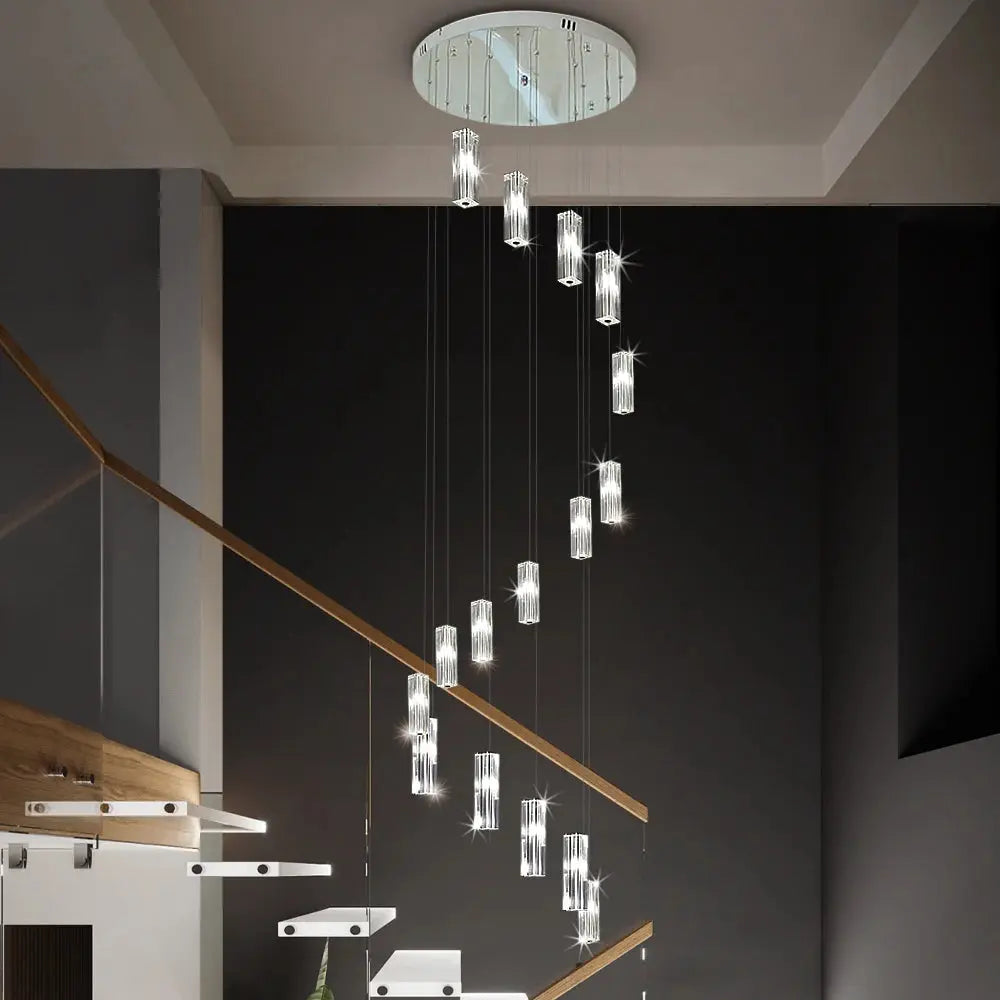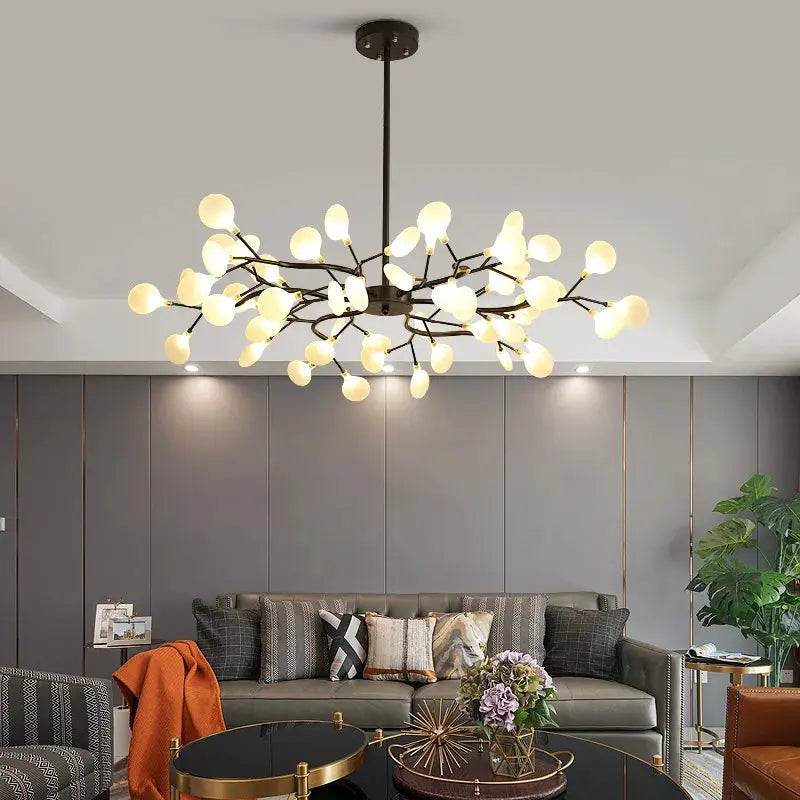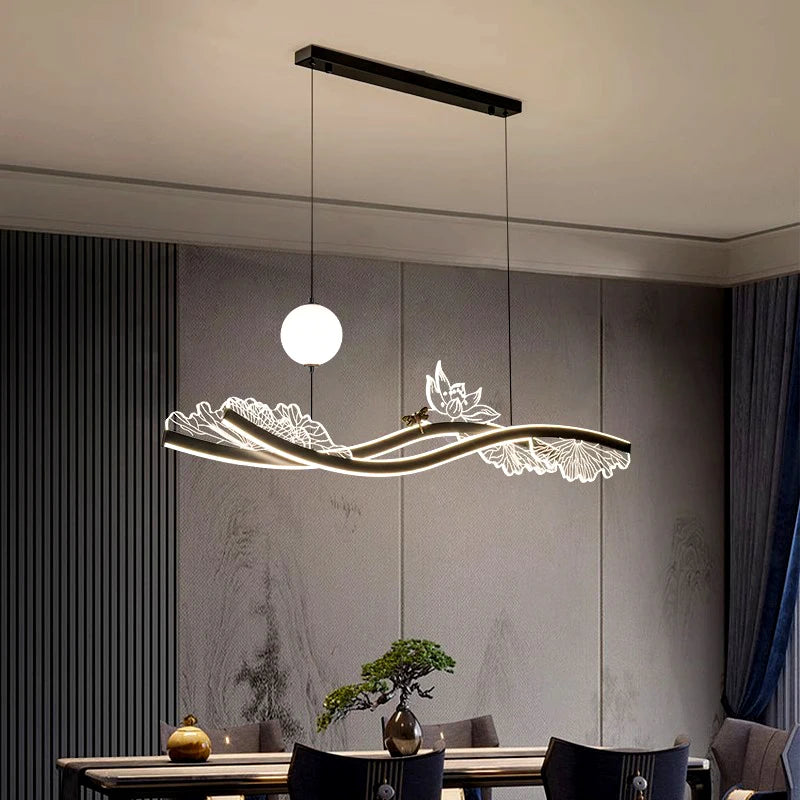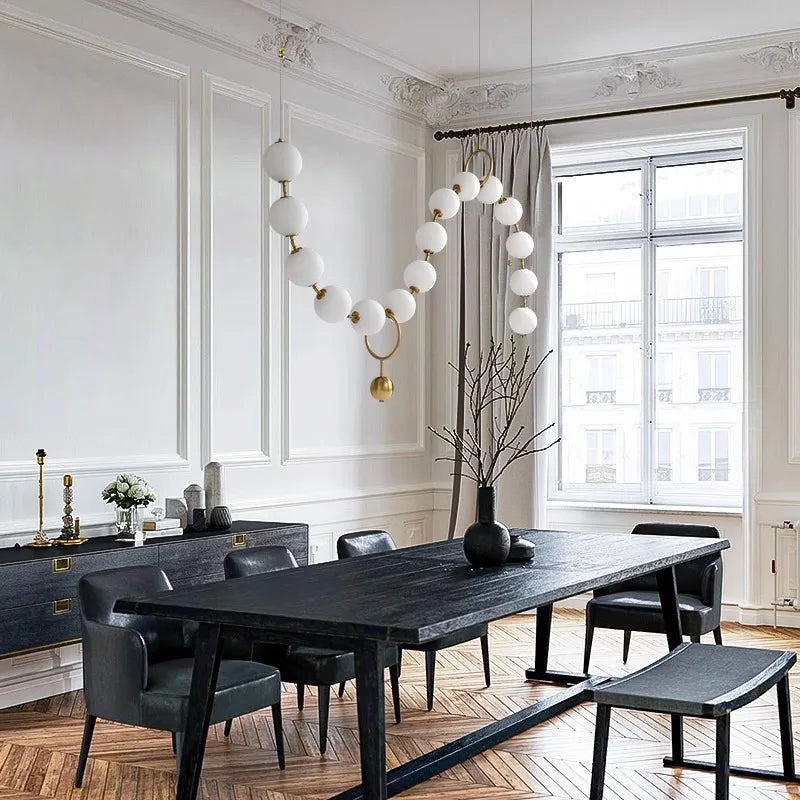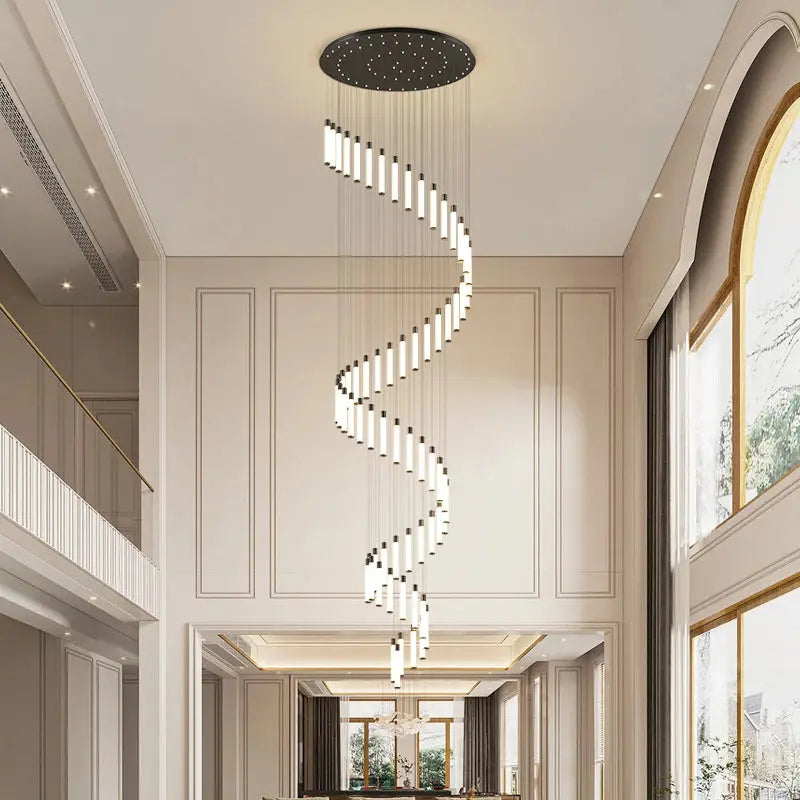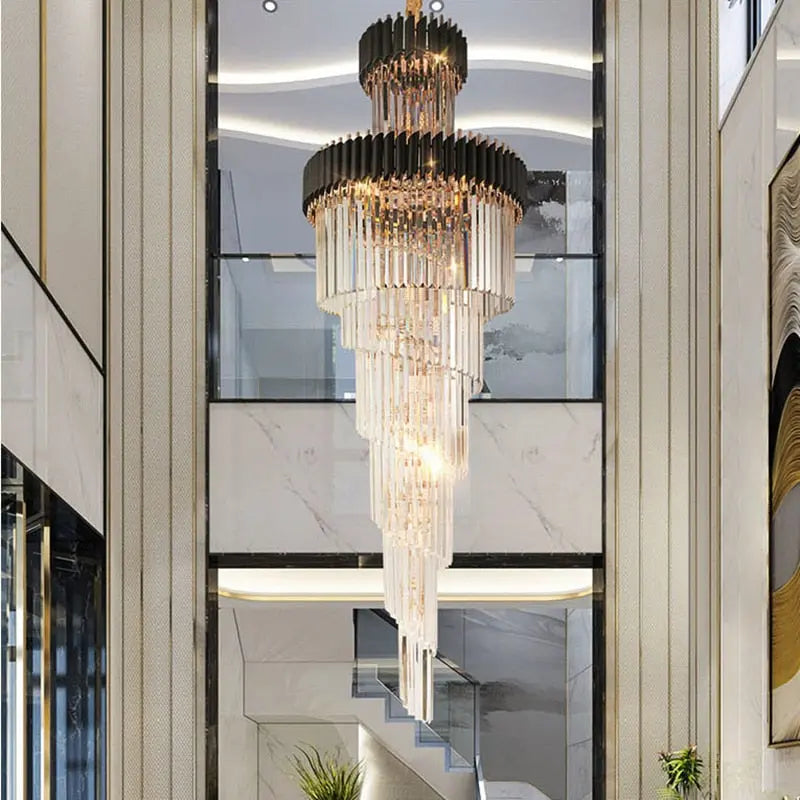As we approach 2025, the lighting industry is changing a lot. New technology, concerns about the environment, and what people want are all shaping how we light our spaces. This article looks at upcoming trends in lighting design and technology around the world. We'll see how these trends are changing the way we light our homes and workplaces, and how they affect our daily lives, energy use, and even our health.
Key Takeaways: 2025 Lighting Trend Map
2025 Lighting Trends
- Smart lighting systems with AI and IoT integration
- Human-centric lighting supporting natural circadian rhythms
- Energy-efficient and sustainable lighting solutions
- Artistic and sculptural lighting designs
- Personalized and adaptive lighting experiences
- Integration of natural and organic materials
- Minimalist and integrated lighting solutions
- Advanced controls with voice and gesture recognition
- Increased use of LED and OLED technologies
- Lighting for improved well-being and productivity
- Dynamic color-changing capabilities
- Augmented reality tools for lighting design
- Focus on recyclable and eco-friendly materials
- Lighting systems with multiple functions (e.g., wireless charging)
- Growth in solar-powered LED solutions
Artistic and Sculptural Lighting: Form Meets Function
In 2025, lighting fixtures are becoming more than just sources of light - they're evolving into art pieces that serve as focal points in interior design. This trend represents a significant shift in how we perceive and utilize lighting in our spaces. Staircase chandeliers are leading this trend, combining functionality with striking visual appeal. These fixtures are not only illuminating spaces but also transforming them into captivating visual experiences.
The Calla Luxury Staircase Chandelier and Bliss Traditional Staircase Chandelier show how lighting can be both useful and beautiful. These chandeliers use high-quality materials like brass and crystal to create a centerpiece in any room. They not only light up staircases but also make the whole area look more elegant and fancy.
Geometric shapes and abstract designs are also becoming more common in lighting fixtures. The Modern Geometric Staircase Chandelier with Dimming is a good example of this trend. It has clean lines and a modern look that fits well in new homes.
These artistic lighting fixtures are not just for show; they are designed to provide good light for staircases and high-ceilinged areas. Designers are creating pieces that look interesting and light up spaces well. We can expect to see more creative and striking fixtures in the coming years.
Smart and Adaptive Lighting: The Tech Revolution
Technology is changing how we control and use lighting in our homes and businesses. Smart lighting systems are getting more advanced, letting users adjust their lights using smartphones, voice commands, or even hand gestures. This is part of the bigger trend of smart homes, where lighting is connected to other home systems for better convenience and energy savings.
One big trend in smart lighting is the ability to change color and brightness to fit different moods or activities. The Modern Black Linear Dining Room Chandelier is a good example of this. It can be dimmed to create different atmospheres in a room, from bright for daytime to soft for evening gatherings. This lets users change their spaces throughout the day just by tapping their phone or using a voice command.
These smart lights can be set to turn on and off at certain times or to respond to the amount of natural light in a room, adjusting automatically. This helps save energy and makes homes more comfortable. Some systems even learn what users like over time, guessing what lighting they'll need based on their habits.
Another important part of smart lighting is how it can improve health. Some advanced smart lights can change their color throughout the day to match natural light patterns, helping with sleep and daytime alertness. As more research is done in this area, we'll likely see more lighting solutions designed to improve health and productivity.
Sustainable Lighting: Eco-Friendly Illumination
As people become more aware of environmental issues, sustainable lighting options are becoming more popular and necessary. This trend is driven by both consumers wanting eco-friendly products and strict energy rules in many countries. LED lights are leading this movement, using much less energy and lasting longer than old-style lights.
The Sputnik Branch Firefly Chandelier shows how modern design can use LED technology. This light looks modern and stylish while using energy-efficient LED bulbs. It shows that lights can look good and save energy at the same time.
Many lighting companies are also using recycled and sustainable materials in their products. This helps reduce the environmental impact of making lights. From recycled glass and metals to plastics that break down naturally, designers are finding new ways to make beautiful lights that are better for the planet.
Making lights that last longer is another important part of sustainable lighting. When lights last longer, fewer need to be made and thrown away, which saves resources and reduces waste over time. Some companies are even making lights that can be easily upgraded or fixed, so they last even longer.
Personalized Lighting Experiences: Tailored Illumination
In 2025, people want lighting that can be adjusted to fit their needs and likes. This matches a bigger trend of customization in home design and technology. People are looking for lighting that can be changed for different activities, moods, or times of day, creating spaces that fit their lifestyles perfectly.
The Modern Ceiling Chandelier Light for Dining Room shows this trend towards personalization. It can be dimmed to create the right mood for different occasions, from bright light for family gatherings to softer light for romantic dinners. This control lets homeowners change their spaces to fit different needs throughout the day.
Task-specific lighting is getting more advanced and integrated into overall lighting designs. This recognizes that different activities need different types of light, both in brightness and color. The Luxury Crystal Chandelier for Kitchen Table & Island shows how decorative lighting can also provide focused, practical light for cooking and dining areas. These multi-purpose lights are part of a growing trend towards lighting that looks good and works well.
Advanced lighting control systems are making it easier to create personalized lighting scenes. Many smart lighting setups now let users save and recall specific lighting settings with a button press or voice command. Some systems even use artificial intelligence to learn user preferences over time, automatically adjusting lighting based on the time of day, natural light levels, and even the people's moods and activities.
Natural and Organic Materials: Bringing Nature Indoors
Using natural and organic materials in lighting design is a growing trend that shows people want to feel more connected to nature in their indoor spaces. This approach to design isn't just about looks; it's also linked to feeling better and more calm indoors. Designers are using more materials like wood, stone, and natural fibers to make lighting fixtures that bring a bit of the outdoors inside.
The Modern Minimalist Bubble Glass Orb Chandelier shows how natural elements can be used in modern lighting design. Its glass orbs look like bubbles or water drops, creating a light that feels both modern and connected to nature. This type of design not only provides light but also adds visual interest and a sense of natural beauty to a room.
Textured glass and ceramic shades are becoming more popular in lighting design. These materials add depth and visual interest to lights, creating unique lighting effects that can change the feel of a room. Using these natural materials also makes indoor spaces feel warmer and more authentic, balancing out the sometimes cold feel of modern design.
Some creative designers are even putting actual plants into their lighting designs. This "living lighting" trend combines the practical aspects of light with the air-cleaning and mood-improving benefits of plants. While it's still a small market, these nature-inspired lighting solutions show an exciting new direction in lighting design.
Regional Lighting Trends: What's Popular Where
| Region | Key Trend | Popularity | Status |
|---|---|---|---|
| North America | Smart home integration | High | 4 |
| Europe | Artistic and sculptural designs | Very High | 5 |
| Asia | Blending tradition with technology | High | 4 |
| Middle East | Opulent lighting concepts | Medium | 3 |
| Australia/Oceania | Natural and eco-friendly materials | Medium-High | 3.5 |
| South America | Colorful and vibrant designs | Medium | 3 |
| Africa | Solar-powered lighting solutions | Medium-Low | 2.5 |
North America: Smart Home Integration and Energy Efficiency
In North America, people are focusing on making homes smarter and more energy-efficient with advanced lighting. Consumers want lighting systems they can control with smartphones, voice commands, or home automation systems. This is part of a bigger trend towards connected homes and the Internet of Things (IoT) in the region. The Black Gold Long Hanging LED Chandelier for Stairwell is a good example of this trend, combining stylish design with smart features that fit well in modern, tech-savvy homes.
Energy efficiency is still a big concern in North America, driven by environmental awareness and the desire to reduce energy bills. Many homeowners and businesses are switching to LED lighting and looking for fixtures that use power efficiently while still providing good light. Government programs that encourage the use of energy-efficient lighting technologies are supporting this shift.
Europe: Artistic and Sculptural Designs
In Europe, lighting is increasingly seen as a form of art, with consumers looking for unique, eye-catching designs that make bold statements in their living spaces. This trend reflects the region's rich design history and appreciation for craftsmanship. The Olivia Crystal Modern Stair Chandelier is a perfect example of this trend, blending modern design with classic crystal elements to create a striking visual piece that serves as both a light source and a work of art.
Sustainability is also important in European lighting design, reflecting the region's strong environmental policies and consumer awareness. Many European consumers are actively looking for lighting solutions made from eco-friendly materials or designed to be energy-efficient and long-lasting. This has led to new ideas in recyclable materials and designs that can be easily repaired or upgraded, making lighting fixtures last longer.
Asia: Blending Tradition with Modern Technology
In many Asian countries, there's a growing trend towards lighting designs that mix traditional cultural elements with new technology. This blend reflects the region's fast technological growth while honoring its rich cultural history. For example, LED versions of traditional lantern designs are becoming popular, offering the warmth of traditional lighting with the efficiency of modern LED technology.
The Asian market is also seeing more demand for affordable, energy-efficient lighting options, especially in fast-growing urban areas. This trend is driven by the region's booming construction industry and increasing environmental awareness. Smart lighting systems that can mimic natural light patterns are gaining popularity, especially in crowded cities where access to natural light may be limited.
Middle East: Opulent and Luxurious Lighting Concepts
In the Middle East, there's still a strong preference for grand, luxurious lighting designs that reflect the region's love for opulence and craftsmanship. Crystal chandeliers and large, ornate fixtures continue to be popular choices in both homes and businesses, serving as status symbols and centerpieces in interior design.
However, there's also growing interest in energy-efficient lighting solutions, particularly in new construction and urban development projects. Many buildings in the region are using state-of-the-art smart lighting systems that offer both energy savings and the ability to create dramatic lighting effects. This mix of luxury and efficiency is becoming increasingly important as the region focuses on sustainable development and energy conservation.
Lighting for Different Spaces: Tailored Solutions
As we move towards 2025, there's a growing understanding that different spaces need different lighting solutions to work best, look good, and make people comfortable. This section looks at how lighting trends are shaping various areas, from homes to businesses:
Residential Lighting Trends
In homes, people want flexible lighting systems that can adapt to different activities and times of day. Consumers are looking for lighting solutions that can provide bright, energizing light for daytime activities and softer, warmer light for evening relaxation. This change shows a growing awareness of how lighting can affect mood, productivity, and overall well-being. The hanging light fixtures collection offers many options that can be adjusted to suit various needs throughout the day, meeting this demand for versatile home lighting.
Statement lighting pieces that serve as focal points in a room are also becoming more popular in homes. The Modern Minimalist Bubble Glass Orb Chandelier is a good example of this trend, offering a striking visual element that can change the feel of a living room or dining area. These statement pieces are not just about providing light; they're about creating a unique atmosphere and expressing personal style through lighting design.
Commercial and Office Lighting Innovations
In office environments, the focus is increasingly on lighting solutions that improve worker productivity, comfort, and well-being. This includes using adjustable lighting systems that can reduce eye strain and improve focus throughout the workday. Many offices are adopting lighting systems that mimic natural daylight patterns, supporting employees' natural sleep-wake cycles and potentially boosting alertness and productivity.
For retail spaces, lighting is being used more strategically to guide customer behavior and highlight products effectively. The black chandeliers collection offers stylish options that can add a touch of sophistication to commercial spaces while providing functional illumination. Retailers are increasingly using dynamic lighting systems that can be adjusted to create different moods or draw attention to specific areas or products within a store.
Hospitality and Retail Lighting Concepts
In the hospitality industry, lighting plays a crucial role in creating atmosphere and enhancing guest experiences. Many hotels and restaurants are using color-changing LED systems that allow them to adjust the mood of a space throughout the day. For example, a restaurant might use brighter, more energizing lights during lunch and switch to softer, warmer tones for dinner to create a more intimate atmosphere.
In retail environments, lighting is being used more strategically to guide customers through spaces and highlight merchandise. Some innovative retailers are experimenting with lighting systems that can change based on factors such as store traffic patterns, time of day, or even in response to specific customer interactions. This dynamic approach to retail lighting aims to create more engaging and personalized shopping experiences.
Conclusion: Illuminating the Path Forward
As we've explored in this overview, the future of lighting is bright, innovative, and full of exciting possibilities. From smart, adaptive systems that learn and respond to our needs, to sustainable designs that minimize environmental impact, lighting in 2025 and beyond will be about much more than simply illuminating spaces. It will play a crucial role in creating environments that are comfortable, efficient, and tailored to our individual needs and preferences.




